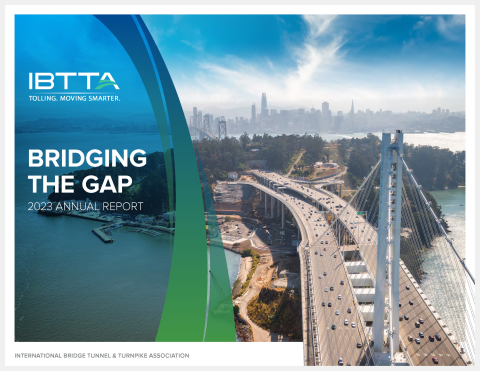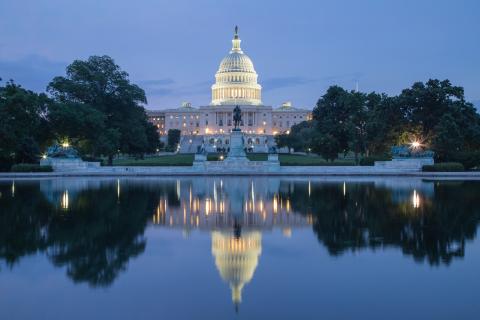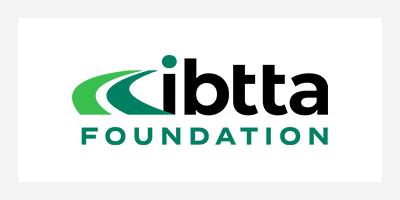- Home
- Comments On Federal Guidance For Electric Vehicle Charging Infrastructure Deployment
Stories
Comments on Federal Guidance for Electric Vehicle Charging Infrastructure Deployment


The Bipartisan Infrastructure Law establishes $7.5 billion in new grant programs to support the deployment of publicly accessible electric vehicle (EV) charging and alternative fueling infrastructure along designated corridors throughout the country. These programs are designed to accelerate the adoption of alternatively fueled vehicles and reduce carbon emissions from mobile transportation sources.
The law creates an EV Charging Program that will provide funding to states to deploy EV charging infrastructure and to establish an interconnected network that facilitates data collection, access, and reliability. The law also establishes a new competitive Charging and Fueling Infrastructure Program to provide grants to a variety of eligible entities to deploy publicly accessible EV charging and alternative fueling infrastructure along designed alternative fuel corridors and certain other locations. The U.S. Department of Transportation is directed to develop guidance for programs and to assist with this development, Federal Highway Administration’s (FHWA) has invited public comments—specifically requesting suggestions for how the guidance could promote equity under the two programs.
IBTTA submitted comments in response to the FHWA’s official Request for Information (RFI) regarding the Development of Guidance for Electric Vehicle (EV) Charging Infrastructure Deployment. Our six-page response is posted on the IBTTA website’s Advocacy page here. Some highlights of our response include:
• An overview of IBTTA, its membership, and relevant activities, including our Sustainability and Resilience Task Force.
• Discussion of seven important factors on EV adoption and market challenges for the federal guidance and requirements to address:
(1) Range anxiety of EV drivers from uncertainty over battery capacity to complete long trips.
(2) Public charging locations for EV drivers without home or workplace charging options.
(3) Demand growth for public fast charging as more demand shifts from home and workplace charging to public locations.
(4) Increased electricity demand requiring adequate grid capacity and effective interfaces.
(5) Open standards and protocols that minimize proprietary hardware, software, and communications.
(6) Payment structures and options that support user choice across a range of demographics, including consideration of RFID payment alternatives.
(7) Technological and business innovation in the long-term is inevitable, but solid business and functional requirements and business rules may avoid unnecessary operational disruption.
Our response also addresses each of the nine statutory requirements of USDOT as defined in the Infrastructure Investment and Jobs Act. Our comments to each of the requirements are below:
1. The distance between publicly available EV charging infrastructure. Address networks gaps and proximity of off-highway charging locations to highway interchanges.
2. Connections to the electric grid; vehicle-to-grid integration to minimize grid impacts; alignment with electric distribution; and plans for renewable energy use. Promote least-cost mitigation to grid impacts through demand management.
3. Proximity of existing off-highway demand points to funded EV charging infrastructure. Direct greater investment in low-income areas to address lack of viable home charging availability.
4. Needs for publicly available EV charging in rural, underserved, or disadvantaged areas. Encourage investment in rural and disadvantaged areas through program incentives or set asides.
5. O&M of EV charging infrastructure to avoid stranded assets and protect investment. Promote flexible service contracts to leverage future cost savings and economies of scale. Leverage ancillary revenue generation at charging locations for financial support.
6. Existing EV charging infrastructure programs and incentives. Ensure balanced federal investments benefitting private citizens and small fleets, and aligned with high growth regions and supportive state programs. Encourage open data exchange standards, communication protocols, and equipment interfaces.
7. Fostering public-private or private investment in EV charging infrastructure. Encourage public-private infrastructure cost sharing and business approaches. Use federal grants to kick-start investment, not fund ongoing O&M expenses. Revise Title 23 U.S. Code Section 1111 to remove barriers to electricity sales along federal-aid highways while users travel along the rights of way; this may encourage investment in electric roads with inductive charging supported by user-payments as a revenue source.
8. Meeting current and future demands for EV charging (i.e., power levels, charging speed, charging times). Use managed charging approaches to encourage charging during low-demand hours, flexible equipment deployment among Level 2 and DC fast chargers, and interoperability across operating and commercial systems. Require comprehensive cost analyses to encompass life-cycle economics, soft costs, and grid impacts.
9. Other factors that USDOT should consider. Provide states the flexibility to transfer formula funds to a state, multi-state or local public tolling agency that owns or operates a toll facility that is a public road, bridge, or tunnel.
If you have questions or comments, contact Mark Muriello at [email protected].

Mark Muriello is IBTTA’s Vice President of Policy & Government Affairs. Mark has a distinguished record of accomplishment in highway operations, tolling, finance, transportation planning, and policy. Mark advocates for tolling and road pricing interests at the federal, state and local levels of government, and works with a a comprehensive array of industry organizations and stakeholders. Mark actively leads IBTTA’s agenda in government affairs, policy, lost revenue recovery, sustainability and reliance, climate action, and alternative transportation revenue sources.
Mark has more than four decades of experience in transportation and public finance, covering tolling and highway operations, bridges, tunnels, rail, bus, and marine terminal facilities, as well as in the electric utility industry. As the former Deputy Director of Tunnels, Bridges and Terminals for The Port Authority of New York and New Jersey, Mark oversaw the operations, maintenance and planning for the agency’s six tunnels and bridges and two interstate bus terminals that connect the New Jersey and New York City. Mr. Muriello served on the International Bridge, Tunnel and Turnpike Association’s Board of Directors while at the Port Authority and in a leadership capacity in a number of industry and national transportation organizations, including the E-ZPass Group, the Transportation Research Board, the OmniAir Consortium, and the Eastern Transportation Coalition.
Joining IBTTA connects you to a global community of transportation professionals, offering unmatched opportunities for networking, knowledge-sharing, and collaborative innovation in the tolling and transportation sector.
Follow IBTTA on social media for real-time updates on transportation trends and collaborative opportunities.





